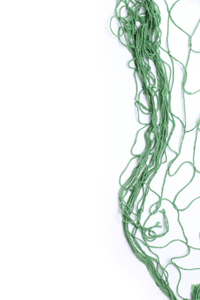-300x192-cropped.jpg)
German research tests performance of Dyneema soft ballistic solutions
According to Netherlands based DSM Dyneema, a recent on commercial fishing has yielded clear proof that nets made with its Dyneema ultra-strong lightweight fibre, yield major cost savings for fishermen through reductions in fuel usage, and make an important contribution to the sustainability of the fishing industry through reduced emissions of carbon dioxide. Dyneema, an ultra high molecular weight polyethylene (UHMWPE) fibre, is manufactured by DSM Dyneema, a compa

18th November 2010
Innovation in Textiles
|
Urmond
 According to Netherlands based DSM Dyneema, a recent on commercial fishing has yielded clear proof that nets made with its Dyneema ultra-strong lightweight fibre, yield major cost savings for fishermen through reductions in fuel usage, and make an important contribution to the sustainability of the fishing industry through reduced emissions of carbon dioxide.
According to Netherlands based DSM Dyneema, a recent on commercial fishing has yielded clear proof that nets made with its Dyneema ultra-strong lightweight fibre, yield major cost savings for fishermen through reductions in fuel usage, and make an important contribution to the sustainability of the fishing industry through reduced emissions of carbon dioxide.
Dyneema, an ultra high molecular weight polyethylene (UHMWPE) fibre, is manufactured by DSM Dyneema, a company which claims to have made sustainability a keystone of its corporate strategy. “We view our sustainability efforts across three key dimensions, People, Planet and Profit.” says André van Wageningen, Global Marketing Manager for Commercial fishing at DSM Dyneema.
“We are continually asking ourselves: how can we improve the quality of life of our clients and their customers? How can we reduce our environmental impact and contribute to sustainable business and manufacturing processes? And how can we ensure DSM Dyneema and our customers will have the financial resources to continue this important work well into the future?”
The commercial fishing industry is a key market for the company which says that Dyneema fibre enables fishermen to use nets with thinner twines and ropes that are less bulky than more traditional materials, without sacrificing performance. The lower weight and smaller diameter of the equipment result in lower drag that they create in the water, enabling fishermen to make significant fuel savings, DSM Dyneema says.
“People have been saying for a long time that the Dyneema fibre has major advantages over steel wire and other synthetic fibres in netting and rope,” says van Wageningen. “But we wanted to look at the entire value chain and also needed market data from a respected independent source to conclusively confirm our own beliefs. This is what we now have.”
DSM Dyneema commissioned Triple Value, a specialist sustainability consultancy, to quantify the impact of the use of Dyneema fibre all along the value chain in the commercial fishing industry. The study focused mainly on wild catch in pelagic zones. Two case studies of boats fishing in the North and North-East Atlantic for herring and mackerel were developed and extensive interviews and research carried out.
The study came up with several important conclusions. The most important one, DSM Dyneema says, was a clear confirmation that by switching to Dyneema fibre, less fuel is used and the reduction in resulting carbon dioxide emissions from a vessel over the course of one year is substantial – in one case approximately equivalent to the emissions of 100 cars in the same period.
“Everybody is talking about carbon footprints these days,” says van Wageningen. “Trawler owners attach a lot of importance to the investment cost of their nets and ropes, and their cost in use. This study demonstrates that the money they can save in reduced fuel bills by using nets and ropes with Dyneema, the low maintenance cost together with the environmental benefits, easily make up for the higher up-front investment.”
According to DSM Dyneema, Triple Value compiled data from two different boats operating in the North and North East Atlantic, with very different annual landings and levels of fuel consumption. In both cases, it found that over the period of one year, the operators saved substantial amounts (almost €100,000 in one case) by using gear made with Dyneema, thanks to fuel savings of around 10%. The savings were particularly noticeable when fishing in shallower water.
“The use of UHMWPE fibre of DSM Dyneema leads to a reduced footprint all along the value chain,” says van Wageningen. “This is not a win-win situation; it’s a win-win-win situation. The supplier benefits, the user benefits, and the planet benefits.”
DSM Dyneema presented the results and conclusions of its study at the Energy use in Fisheries Symposium, held in Seattle on November 14-17.

Business intelligence for the fibre, textiles and apparel industries: technologies, innovations, markets, investments, trade policy, sourcing, strategy...
Find out more